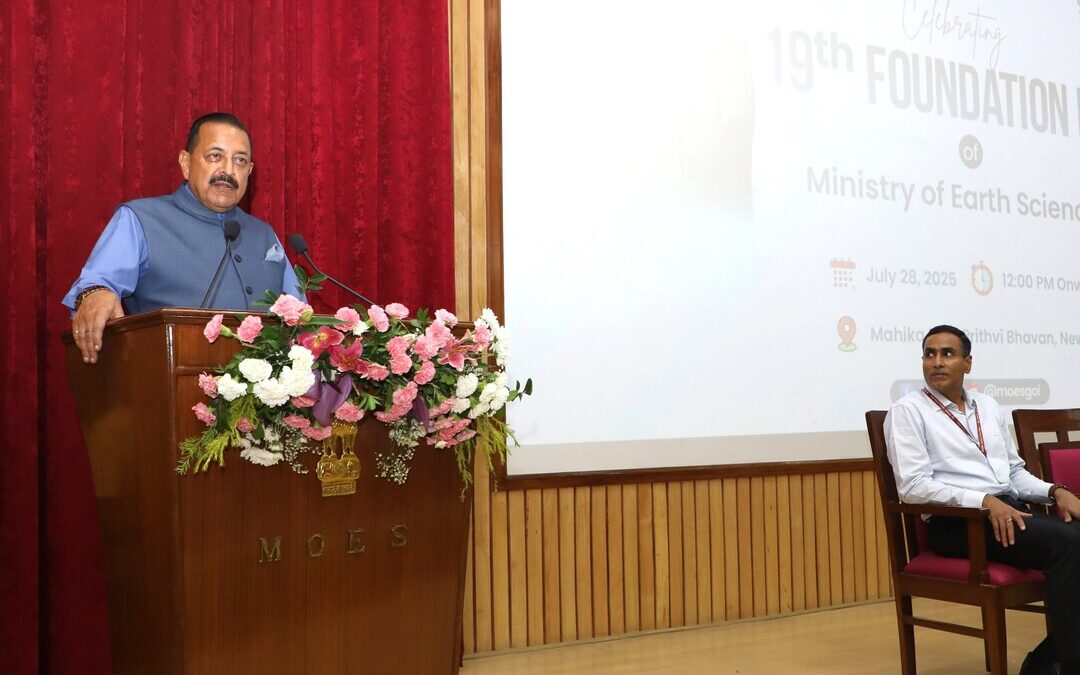India Launches 14 Climate Tools to Boost Resilience, Focuses on Ocean Economy
India launches advanced climate tools and ocean mission tech to boost resilience, disaster alerts and public services.
India unveiled 14 new scientific products and initiatives on Monday aimed at enhancing climate resilience and public services, with Minister of State for Science and Technology Dr. Jitendra Singh calling for wider outreach of science-driven services on its 19th Foundation Day.
Speaking at a ceremony in New Delhi, Singh said the tools — ranging from weather and air quality forecasting systems to seismic studies and marine data — reflect the transformation of the Ministry over the past decade, both in its scientific capacity and public outreach.
“We are now at a stage where even a casual user can access live weather alerts, cyclone warnings, and ocean forecasts on their mobile phones,” Singh said. “This is the result of a government that works in mission mode.”
Fourteen New Tools Unveiled
Among the products launched were the Bharat Forecast System – Extended Range Prediction, high-resolution rainfall datasets, updated wave atlases, crop-weather calendars, and seismic microzonation reports for four cities.
A documentary, “Life Saving Impact,” produced by the India Meteorological Department, was also released.
The new tools are aimed at sectors ranging from agriculture and fisheries to disaster management and marine biodiversity.
Singh said over 700,000 farmers currently use the ministry’s Meghdoot app for weather-based agricultural planning, while coastal fishermen rely on SMS advisories to identify safe and fuel-efficient fishing zones.
From Cyclone Alerts to Clean Water
Singh pointed to the ministry’s improved early warning systems, noting that India now provides cyclone alerts up to 10 days in advance.
“The tragic loss of 10,000 lives in Odisha’s 1999 super cyclone set the stage for massive upgrades,” he said, crediting technological advances for minimal casualties in recent storms.
He also highlighted the success of six ocean thermal energy conversion desalination plants in Lakshadweep, which now produce 150,000 liters of drinking water per day.
“For centuries, these islanders had no fresh water despite being surrounded by the sea,” Singh said. “Now they are water-sufficient.”
Deep Ocean Mission: ‘One Up, One Down’
Calling the Deep Ocean Mission a “game-changer,” Singh said India’s undersea mineral and biological resources could drive long-term economic growth.
“Just as we aim to send one Indian into space through Gaganyaan next year, we may soon see Indians diving 6 km below sea level with Samudrayaan. One up, one down — that’s the vision,” he said.
The minister also noted a sharp rise in the ministry’s budget — from ₹1,281 crore ($147.8 million) in 2014 to ₹3,658 crore in 2024 — which he said had enabled ambitious research and infrastructure development.
Call for Greater Public Awareness
Despite these advances, Singh said many citizens remain unaware of the tools available. “We must communicate in the language people understand best,” he said, urging closer coordination with other ministries and public platforms.
Dignitaries attending the event included MoES Secretary Dr. M. Ravichandran, IMD Director-General Dr. Mrutyunjay Mahapatra, and University of Texas professor and UNESCO Chair Dev Niyogi, who joined virtually.
Nirmal Menon
Related posts

Subscribe
Error: Contact form not found.


